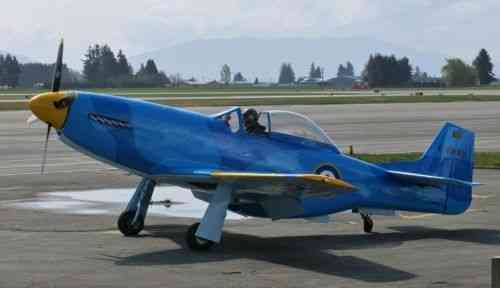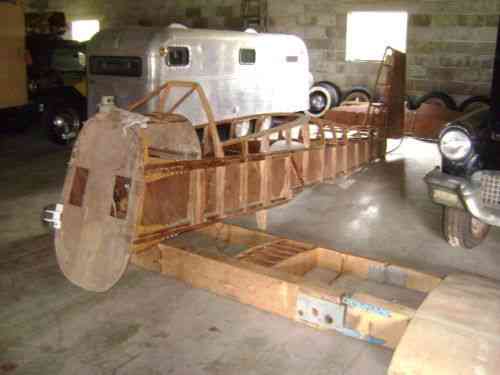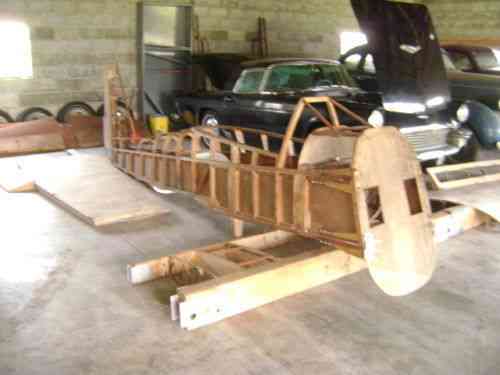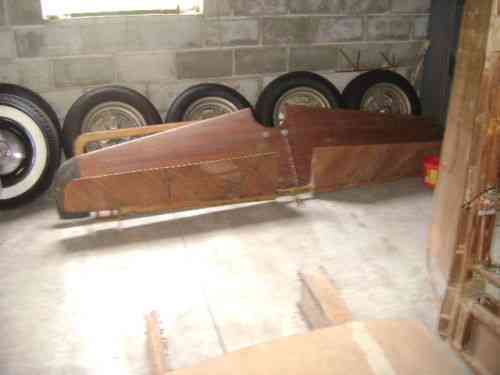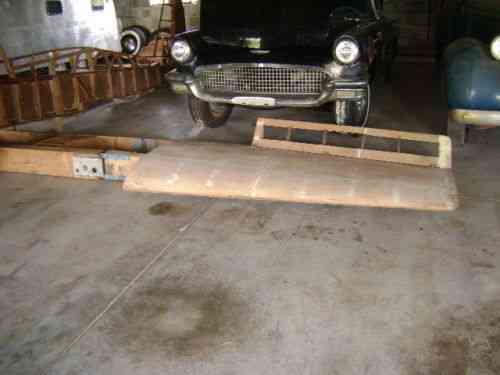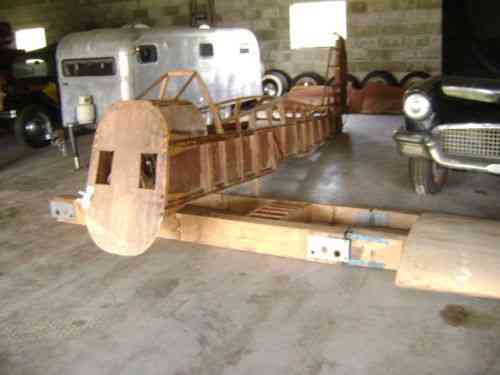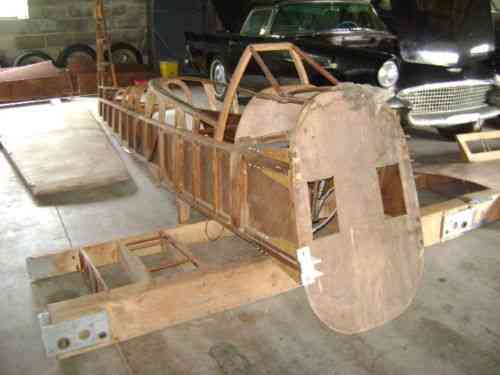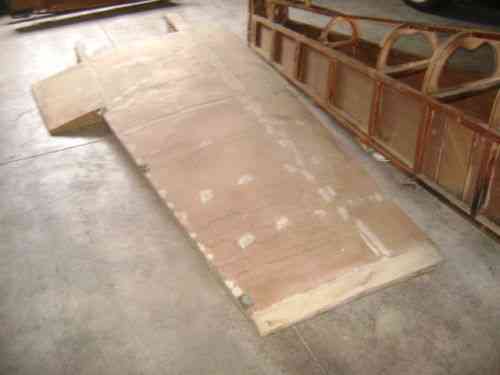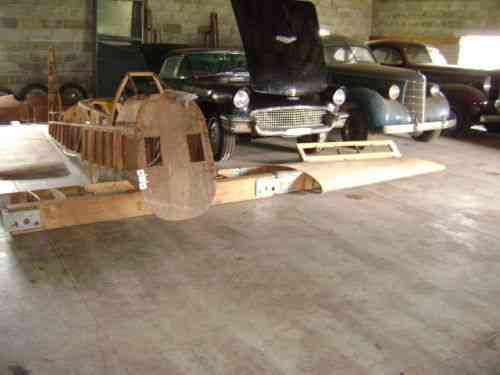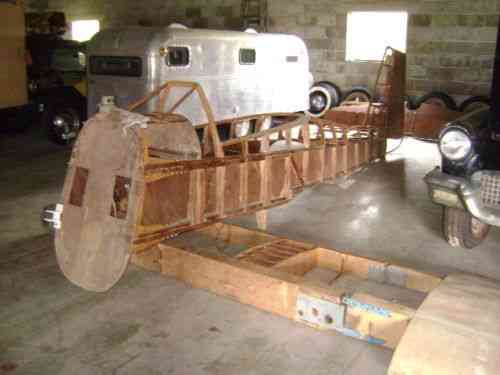““INCOMPLETE AIRPLANE PROJECT FRAME. EXCELLENT FOR LIFE SIZE HANGING DISPLAY.”” 2 3 JURCA GNATSUM.
Item specifics
| Used |
| ““INCOMPLETE AIRPLANE PROJECT FRAME. EXCELLENT FOR LIFE SIZE HANGING DISPLAY.”” |
| Make: | 2/3 JURCA GNATSUM AIRCRAFT FRAME | Model Year: | 1960's-1970's ?? |
RARE OPPORTUNITY TO BUY AVINTAGE WOODEN2/3 JURCA GNATSUM AIRCRAFT FRAME (ABOUT 20 FEET LONG)EXCELLENT FOR DISPLAY
This rare JURCA GNATSUM (MUSTANG spelled backwards) was possibly constructed by a French manufacturer closely resembling the American P-51 MUSTANG FIGHTER PLANE piloted in WWII and the Korean War. Not a lot of information is available for this potentially beautiful aviation display unit except for that I am offering it for a fraction of its worth. There are no wheels for this aircraft and I am not certain that this wooden air frame is complete, but as a static display there is more than enough aircraft here to accomplish that. All of the available information online suggests this unit was manufactured in the late 1960"s or early 1970"s, but again I am not sure as some models were manufactured in the 1950"s. (complete info below).
I am a rare/collector car enthusiast and know ABSOLUTELY nothing about airplanes, so you will have to rely on your own research for this item. It is however, very large at about 20 feet long (longer than a 1970 Cadillac Sedan) and several hundred pounds, and will make an unquestionably attractive indoor/man cave aviation display module. So if you got a hankering to tinker around with some model airplanes and you"re feeling ambitious, don"t buy one in a box, buy this one. With a few yards of canvas skin; shellac and some blue paint, you"ll be tooling around in the clouds in no time, (oh, and you"ll need a 200 hp motor also). So if you"re really serious about your flying hobby, then look for another airplane because I am offering this as a static display only "wall hanger" for all you litigious folks out there reading this listing.
PICK UP ONLY. WILL FIT IN A UHAUL TRUCK.
Jurca GnatsumFrom Wikipedia, the free encyclopediaJurca M.J.7. GnatsumRoleHomebuilt near scale Replica WarbirdNational originFranceDesignerMarcel JurcaFirst flight1969Number built25+VariantsFalconar SAL MustangThe Jurca Gnatsum is a French homebuilt near scale replica aircraft based on the North American Mustang.[1]Design & Development[edit]The Gnatsum ( Mustang spelled backward ) is one of many wooden homebuilt designs from Romainian designer Marcel Jurca . Jurca, a Henschel Hs 129 pilot in WWII, expanded his warbird replica designs to include the allied P-51.[2]The Gnatsum is a low-wing cantilever monoplane an enclosed single-seat cockpit and manually retractable tailwheel landing gear based on that of the Jurca Sirocco.[3] Suitable for a number of engines around 200 hp, plans for the Gnatsum are available as the 2/3 scale MJ.7 and the 3/4 scale MJ.77, as well as the M.J.70 full-size representation. All versions are constructed from wood with fabric covering, and manufacturing rights to the kit aircraft were acquired by Falconar Avia.[4] although the company does not currently offer the aircraft design.Some of the engines suitable for the MJ.7 Gnatsum series are:-200-hp Ranger 6-440C-5 inline engine125-hp Menasco C4130-hp de Havilland Gipsy MajorI125 to 160-hp Rambler aluminum block in-line 6General Motors aluminum V-8
Jurca TempêteFrom Wikipedia, the free encyclopediaMJ-2 TempeteRoleSport aircraftNational originFranceManufacturerHomebuiltDesignerMarcel JurcaFirst flight27 June 1956[1]Number built>60The Jurca MJ-2 Tempete (French: "Tempest") is a single-seat sport aircraft designed in France in the mid-1950s and marketed for homebuilding.Contents [hide] 1Development2Operational history3Variants4Specifications (MJ-2A)5References6Other reading7External linksDevelopment[edit]The MJ-2 is one of many wooden homebuilt designs from Romanian-born designer Marcel Jurca. Jurca, a Henschel Hs 129 pilot in WWII started homebuilding with the construction of a Jodel.[2] The first Tempete was constructed in an Aero Club de Courbevoie building in 1954 near Paris.[3] The Tempete is a low-wing cantilever monoplane of conventional configuration, utilising wooden construction throughout apart from the fabric covering of the flying surfaces. The undercarriage is of the fixed, tailwheel or tailskid type. The pilot"s seat is enclosed by a bubble canopy; some aircraft have a second seat to carry a passenger of less than 55 kg (121 lb).[4]The Tempête may be powered by a wide range of engines. At least 13 possibilities have been listed, each with its own suffix letter. These engines are all either Continental or Lycoming horizontally-opposed types in the power range 48.5 - 134 kW (60-180 hp).[4] The French and UK civil registers[5][6] contain examples with seven different engines, the most popular choice being the 67 kW (90 hp) Continental C90 fitted to the Tempête MJ-2D model.The Jurca MJ-3H Dart was a one-off sport aircraft constructed in the United States, flying in 1977. It was built by Denis Jacobs of Dayton, Ohio, marrying the fuselage of the single-seat Jurca Tempête with the wings of the two-seat Jurca Sirocco.[7] The Jurca Shadow was a variant of the Tempete with larger, swept back tail surfaces.[1]Operational history[edit]The Tempête has been flown since 1957 by private owners and sporting pilots. There have been 37 on the French register, though four of these have been withdrawn as of September 2010.[5] Two Tempêtes had UK Permits to Fly in 2010.[6] In 2000 there were several flying in the USA.[1]Marcel Jurca died 19 October 2001 but plans are still available in 2009 from the designer"s website.Variants[edit]The prototype MJ-2 Tempete No.01 at Mery-sur-Oise airfield near Paris in May 1957 MJ-2 MJ-20 - (never built) MJ-22 - Strengthened version with a 112 kW (150 hp) engine[1] MJ-23 Orage ("Thunderstorm") - high-performance version with trapezoidal wings, intended for a 300-hp engine (never built) MJ-3H Dart - Tempête fuselage with Sirocco wings (one built) MJ-4 Shadow - Version with enlarged, swept empennage[1] (two built)Specifications (MJ-2A)[edit]Data from Jane"s All the World"s Aircraft 1989, pp. 545-6[4] General characteristics Crew: one pilot Length: 5.85 m (19 ft 2 in) Wingspan: 6.00 m (19 ft 8 in) Height: 2.40 m (7 ft 10 in) Wing area: 7.98 m2 (85.9 ft2) Empty weight: 290 kg (639 lb) Gross weight: 430 kg (950 lb) Powerplant: 1 × Continental A-65-8, 48.5 kW (75 hp) Performance Maximum speed: 193 km/h (120 mph) Cruising speed: 165 km/h (102 mph) Service ceiling: 3,500 m (11,500 ft) Rate of climb: at sea level 2.8 m/s (555 ft/min)
Current date: 2016-03-25
